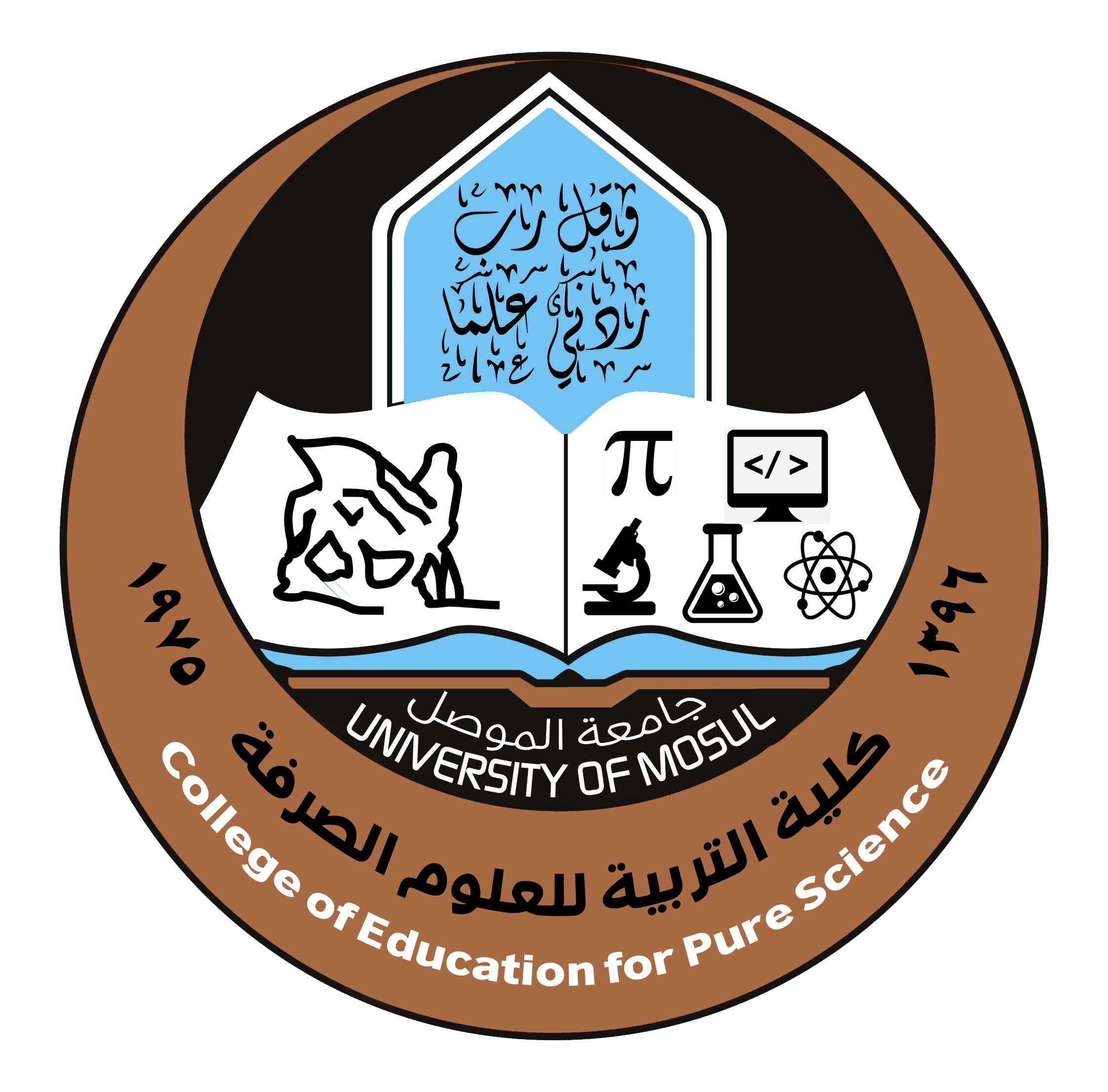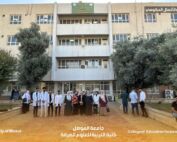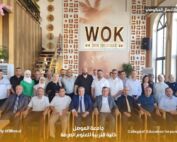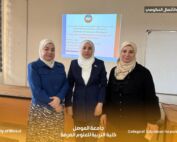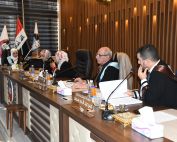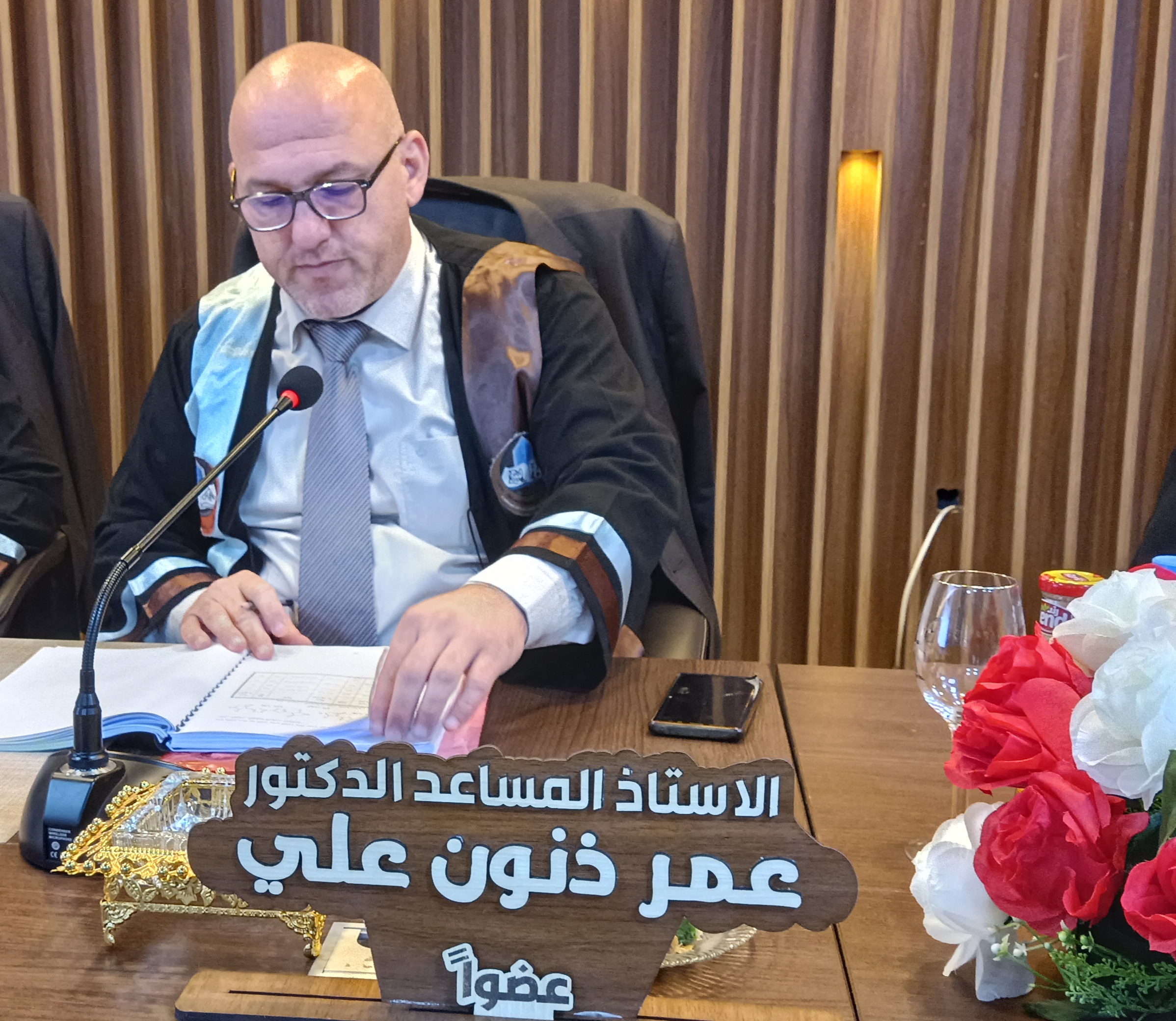5 July، 2022
PH.D. Dissertation Viva-Biology Department
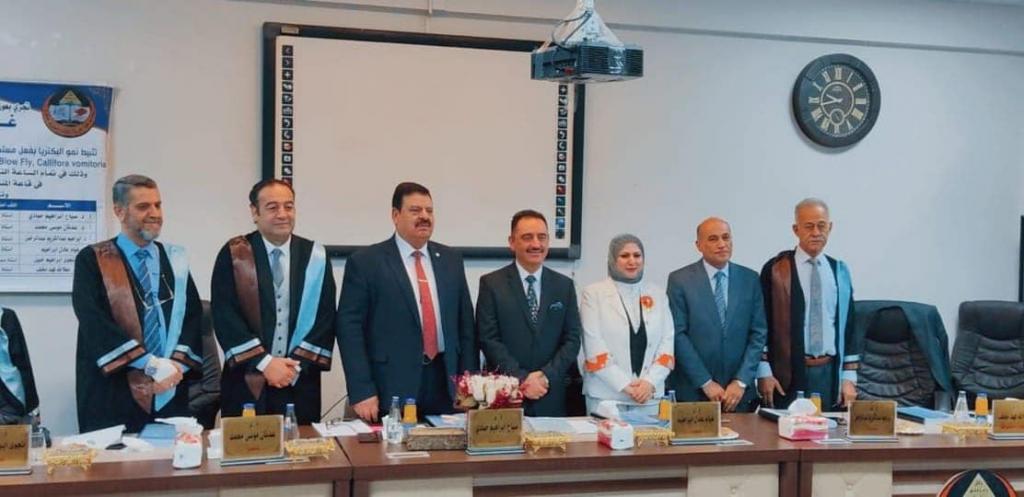
PH.D. Dissertation Viva in the College of Education for Pure Science entitled “Inhibition Of Bacterial Growth By Extracts Of Blow Fly, Calliphora vomitoria (Diptera: Calliphoridae) and larval secretions, with separation and identification of their active compounds “The College of Education for Pure Science, University of Mosul, has done the PH.D. Dissertation Viva entitled ” Inhibition Of Bacterial Growth By Extracts Of Blow Fly, Calliphora vomitoria (Diptera: Calliphoridae) and larval secretions, with separation and identification of their active compounds “,On Tuesday, July 5, 2022, the respected president of Mosul university, Prof. Dr. Kusay Kamal Al-Din Al-Ahmady with the College staff including the respected Dean of the College, Assistant Professor Dr. Qais Ismail Ibrahim, the Honorable Scientific Associate and Administrative Associate, the Honorable Head of the Department of Biology, and a number of the college’s teachers were attended the viva. This study, presented by the PH.D. Student Ghazwan Thamer Khudair Al Rashidi in the Department of Biology, searches for real alternatives to discover new natural antibiotics from animal tissues and organisms directly coexisting with these pathogenic and resistant bacteria. Extracts of immatures (larva, pupa, and adult) blue fly, Calliphora vomitoria and their larval secretions/ excretions were inhibited growth of four pathogenic bacteria, Gram positive Staphylococcus aureus gram-negative; Pseudomonus aeruginosa, Klebsiella pnuemuoniae and Escherichia coli. By relying on polarity as a core point in the extraction process. This study was relied on the extraction of active compounds from the immature tissues using five organic solvents according to their polarity sequence, namely Hexane, Chloroform, Acetone, Ethanol and Water. The standard drug Ceftriaxone (CRO) were used as a positive control group, the degree of bacterial growth inhibition was measured by disc diffusion method. The larval extract by Chloroform solvent evokes high significant inhibition in relation to the standard drug, and extracts with the (hexan, acetone, ethanol and water) solvents at the concentration 25 mg/ml, with growth inhibiting diameters, 16.5, 15.5, 15.2 and 14.8 mm for S. aureus, K. pnuemuoniae, E. coli and P. aeruginosa respectively. The application with concentrations 50 and 100 mg/ ml gives the context results, (30. 8, 26.5 , 22.5 and 21.5 mm ) ( 42.8 , 35.5 , 36. 4 and 35.3 mm) for the above marker bacteria respectively. There were no significant differences in bacterial growth inhibition between larval and pupal extracts for the same extracted solvent, except for pupal extract with chloroform against P. aeruginosa and S. aureus at the concentration 25 mg/ml. the growth inhibition with pupal Chloroform extract at 100 mg/ml were 44.4, 40.5, 36.4 and 32.6 mm for P. aeruginosa, S. aureus , K. pnuemuoniae and E. coli respectively, larva and pupa extract significantly and very clearly outperformed adult extract at the stability of solvent type and extract concentration. So that, the inhibition of Chloroform extract of adult at the concentration 100 mg/ml were 24.5, 24.4, 22.2 and 22.0 mm for S. aureus , P. aeruginosa, K. pnuemuoniae, E. coli, and respectively. After centrifugation of the third instar larval E/ S either infected (cannibalized infected larvae) nor uninfected bacteria, two colored upper phases and a clear lower phase were obtained. The disc proliferation test was conducted on two strains of the same bacteria; A sensitive strain and another antibiotic-resistant. Clear phase was significantly difference at the concentrations 50 and 100 mg/ml, in inhibiting the growth of bacteria over the colored phase for sensitive and resistant bacteria. The highest recorded inhibition of P.aeruginosa – negative bacteria – was 32.2 mm. While for sensitive bacteria, the highest inhibition was for K. pneumoiae 36.0 mm, the inhibition ratios for the resistant strains decreased, as the highest inhibition of P. aeruginosa bacteria was 17.8 mm, the uninfected one, while for the resistant one, the highest inhibition was for the same type of P. aeruginosa 22.8 mm, and there were no significant differences between the both phases against the strains resistant strains. The active compounds were separated and identified by gas chromatography-mass spectrometry (GCMS) test, from the extract of blue fly instars, where 15 compounds were identified from the caterpillar extract, six of which are biologically active and effective in inhibiting the growth of antibiotic-resistant bacteria, namely Nitro-2-propanone, n-hexadecanoic acid, oleic acid, Oxacycloheptadec-8-en-2-one, Acetic acid and Octadecadienal, all the compounds extracted from the pupal stage without exception inhibited the growth of bacteria of all kinds. 3-Hexanediol and (N-2-Oxoethyl), as well as the active compounds extracted from the adult blue fly, which was less active in inhibiting the growth of bacteria as it appeared in the extract of the adult compound Glyceraldehyde, which led to a negative result in inhibiting the growth of all kinds of bacteria, as well as tests were conducted Spectroscopic analysis of the active compounds on the extracts of the blue fly phases IR Spectroscopy and a group of active groups were identified within the three phases extracts. The Viva committee was chaired by Prof. Dr. Sabah Ibrahim Hamade the president of Falloja University and the membership of Prof. Dr. Adnan Mosa Mohammed / University of Mosul / College of Education for Pure Science, Prof. Dr. Ibraheem Abdul-Kareem Abdul-Rahman / Falloja University / College of Applied Sciences, Prof. Dr. Hiam Adel Ibraheem / The Dean of Sciences College, Asst. Prof. Dr. Najwa Ibraheem Khalil / University of Mosul /College of Education for Pure Science and under the supervision and membership of Prof. Dr. Attallah Fahad Mkhlif / University of Mosul / College of Education for Pure Science.
